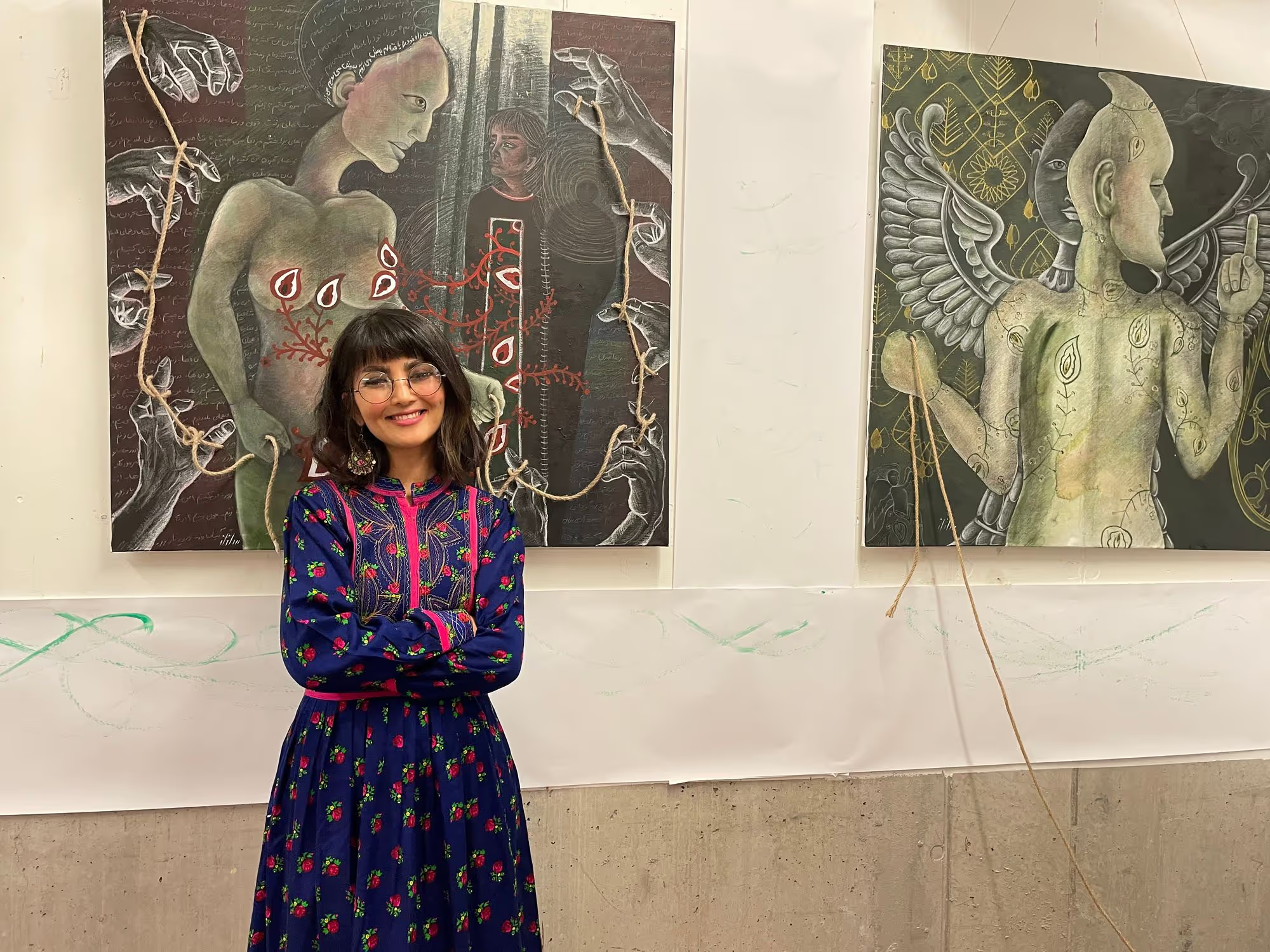Sanaz Hakimi

Sanaz Hakimi is a painter and illustrator from Bamiyan, Afghanistan. She holds a BA in Graphic Arts and a MA in Illustration from the University of Tehran, Iran. Sanaz has been an active artist since 2005 and her work spans across a variety of genres, including painting, pottery, ceramics, and murals. Sanaz has also worked as costume and set designer, art teacher, and tattoo artist.
Much of Sanaz Hakimi’s work focuses on the culture and traditions of Hazara people in Afghanistan, as well as the situation of women in Afghanistan, more generally. Examples of this include Hakimi’s painting ‘Spring and Blood’, commemorating Bahar, a Hazara girl who was killed in an explosion caused by the Taliban and ‘Hero of Freedom’, dedicated to the women of Afghanistan who, in the artist’s words, ‘are alive, but do not live’.
In her depictions of Hazara culture, Sanaz Hakimi has focused on the Buddhas of Bamiyan statues carved into cliffs in the Bamiyan Valley in Central Afghanistan approximately 1500 years ago. The statues are surrounded by caves decorated with Buddhist murals and both were declared to be ‘idols’ and destroyed by the Taliban in 2001. The Buddhas of Bamiyan remain crucial symbols of Hazara identity and culture. Hakimi’s paintings based on the Buddha statues and murals were exhibited at the 2021 Nami Concours in South Korea and her work has also appeared in several exhibitions in Iran and elsewhere.
Sanaz, as a woman artist and a member of the Hazara community living between Afghanistan and Iran, experienced limitations on her artistic work. This caused her to limit the output of her work and ultimately leave the region.
In December 2023, Sanaz Hakimi arrive in Örebro, Sweden and took up the ICORN residency for the period 2023-2025. She continues her artistic work in Sweden and is planning exhibitions in her host community as well as further study.



